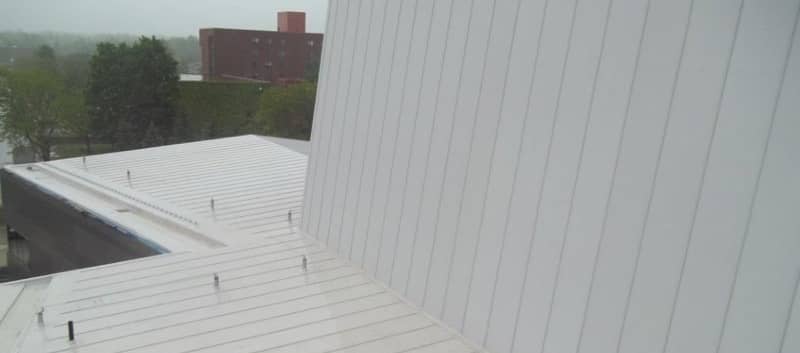 FM Global (FM) has had a major influence in the design and installation of membrane roofing systems since the early 1970’s. As a major underwriter, FM offers insurance coverage, loss prevention information, risk management and product certification. Product certification is where the commercial roofing industry is often required to adapt as FM has evolved over the years.
FM Global (FM) has had a major influence in the design and installation of membrane roofing systems since the early 1970’s. As a major underwriter, FM offers insurance coverage, loss prevention information, risk management and product certification. Product certification is where the commercial roofing industry is often required to adapt as FM has evolved over the years.
Roofing systems are tested and evaluated at FM under their 4470 protocol. The evaluation includes:
- Wind Uplift
- External Flame Spread – ASTM E108
- Internal Fire – Calorimeter
- Hail Impact
- Seam Leakage
- Foot Traffic
The standard FM Class 1 decks for construction include minimum 22 gauge steel, 3,000 psi concrete and minimum ¾-in fire rated wood.
Up until 1999, Factory Mutual Research was an extension of Factory Mutual. Their focus was principally testing for loss prevention for the FM insured customers. FM Research brought the industry the ubiquitous I-90 classification and became the gold standard for specifying wind resistance. Back then it seemed that whatever the deck type or building location, the specification required a 1-90 classification. The Roman numeral I signified the type of construction and the 90 was the tested uplift rating. When non-rated decks were involved, (less than 22-ga steel, plywood, gyp and tectum) a simple rational analysis presented to the FM Loss Prevention Engineer for the customer would often be accepted for a particular construction project.
The rational analysis was often based upon information that was contained within the FM Loss Prevention Data Sheet catalog. FM deserves credit for publishing their Loss Prevention Data Sheets. There was a time when they had to be purchased but are now freely shared within RoofNav. They contain a wealth of information for the practical evaluation and installation of commercial roofing systems.
In August of 1992, Hurricane Andrew ripped through South Florida and became the impetus that changed the way roofing systems over steel decking are tested. Prior to Andrew, uplift certification was conducted primarily in a 5’ x 9’ test frame. After Andrew, all manufacturers were required to re-certify their systems in the new 12’ x 24’ test frame and the 1-90 expanded to now include approvals for 1-200+ for steel and up to 1-990 for concrete.
In 1999 Factory Mutual Research became FM Approvals, a wholly owned subsidiary of FM Global. Their business model was modified so they could function as a third part certification entity. This changed the way testing and subsequent engineering approvals were granted. Prior to the change, engineering evaluations for inclusion in the Approval Guide could be obtained based upon rational analysis of existing data. Now, pre-existing data or the establishment of new data is required for every FM approval.
FM RoofNav was launched in 2001. It was introduced as a configuration tool to simplify FM Approvals. And in some respects, it has but in others, it has become complex and cumbersome. This is especially true for beginners tying to use the tool to establish and or find an “approved” assembly.
For the majority of today’s commercial roofing installations, there are some pretty common RoofNav numbers to support the designs and most manufacturers offer cheat sheets or guides to assist in sorting out RoofNav numbers for common constructions. The challenge and difficulty comes when designs get complex or exotic. Designers should work with the roof system manufacturer who will have experts available to navigate RoofNav prior to configuring an assembly to ensure it can be supported by a RoofNav number when required.
-1.png?width=500&height=271&name=FiberTite_Only%20(500px%20wide)-1.png)


-1.png)